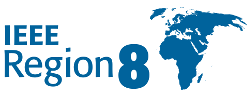IEEE Greece Joint VT & AES Chapter Dissemination Activity Report
IEEE Joint VTS & AESS Greece Chapter is currently putting a considerable effort in creating a network of collaborating groups at every educational institution in Northern Greece. In this context a workshop on “Modern Information Systems and Wireless Telecommunication Issues” was organised on 23 March 2010, at the International Hellenic University, Thessaloniki, Greece. The workshop was very successful, with an audience of about 350 persons, students and stuff of the International Hellenic University (http://www.ihu.edu.gr/), of the Aristotle University of Thessaloniki (http://www.auth.gr/home/index_en.html), of the University of Macedonia (http://www.uom.gr/index.php?newlang=eng), of the University of Western Macedonia (http://www.uowm.gr/english/index.htm), of the Technological Educational Institute of Thessaloniki (http://www.teithe.gr/index_en.html), of the Technological Educational Institute of Serres (http://www.teiser.gr/index_en.php?mid=0&sid=0), and of the Centre for Research and Technology of Hellas (http://www.certh.gr/root.en.aspx). There were also attendees from the Greek Government.
The Chair offered a speech to the audience (among which there were about 30 members of the IEEE) on the Chapter activities and more generally on IEEE activities. She received a lot of questions especially on the benefits of joining IEEE community.
Besides, this workshop was a motivation for the students and the academic stuff of the Department of Informatics and Telecommunications Engineering, University of Western Macedonia, Kozani, Greece, to discuss the establishment of an IEEE Student Branch.
More events, in various capital cities of Northern Greece, are foreseen and detailed by the dissemination committee of the Chapter. More information is found on the Chapter site: http://ewh.ieee.org/r8/greece/avtc/.
